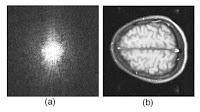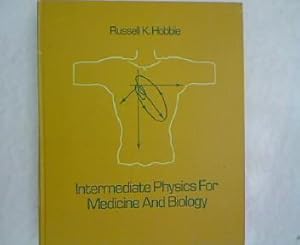Heart attacks are the leading causes of death in USA. Research indicates one common thread, high blood viscosity, linking all cardiovascular diseases. Turbulence in blood circulation makes different regions of the vasculature vulnerable to development of atherosclerotic plaque. Turbulence is also responsible for systolic ejection murmurs and places heavier workload on heart, a possible trigger of heart attacks. Presently, neither medicine nor method is available to suppress turbulence. The only method to reduce the blood viscosity is to take medicine, such as aspirin. However, using medicine to reduce the blood viscosity does not help suppressing turbulence. In fact, the turbulence gets worse as the Reynolds number goes up with the viscosity reduction by the medicine. Here we report our new discovery: application of a strong magnetic field to blood along its flow direction, red blood cells are polarized in the magnetic field and aggregated into short chains along the flow direction. The blood viscosity becomes anisotropic: Along the flow direction the viscosity is significantly reduced, but in the directions perpendicular to the flow the viscosity is considerably increased. In this way, the blood flow becomes laminar, turbulence is suppressed, the blood circulation is greatly improved, and the risk for heart attacks is reduced. While these effects are not permanent, they last for about 24 hours after one magnetic therapy treatment.The report is related to an earlier paper by Tao and Ke Huang “Reducing Blood Viscosity with Magnetic Fields” (Phys Rev E, Volume 84, Article Number 011905, 2011). The APS published a news article about this work.
I have some concerns. Let’s use basic physics, like that discussed in Intermediate Physics for Medicine and Biology, to make order-of-magnitude estimates of the forces acting on a red blood cell.
First, we’ll estimate the dipole-dipole magnetic force. A red blood cell has a funny shape, but for our back-of-the-envelope calculations let’s consider it to be a cube 5 microns on a side. The magnetization M, the magnetic field intensity H, and the magnetic susceptibility χm are related by M = χm H (Eq. 8.31, all equation numbers from the 5th edition of IPMB), and H is related to the applied magnetic field B by B = μo H (Eq. 8.30), where μo is the permeability of free space. The total magnetic dipole of a red blood cell, m, is then a3M (Eq. 8.27), or m = a3χmB/μo. If we use χm = 10-5, B = 1 T, and μo = 4π × 10-7 T m/A, the dipole strength is about 10-15 A m2. The magnetic field produced by this magnetic dipole in an adjacent red blood cell is about μom/(4πa3) = 10-6 T (Eq. 18.32). The force on a magnetic dipole in this nonuniform magnetic field is approximately mB/a = 2 × 10-16 N (Eq. 8.26).
What other forces act on this red blood cell? Consider a cell in an arteriole that has a radius of 30 μm, is 10 mm long, and has a pressure drop from one end of the arteriole to the other of 45 torr = 6000 Pa (see Table 1.4 of IPMB). The pressure gradient dP/dx is therefore 6 × 105 Pa/m. The pressure difference between one side of a red blood cell and the other should be the product of the pressure gradient and the cell length. The force is this pressure difference times the surface area, or a3dP/dx = 8 × 10-11 N. This force is about 400,000 times larger than the magnetic force calculated above.
Another force arises from friction between the fluid and the cell. It is equal to the product of the surface area (a2), the viscosity η, and the velocity gradient (Eq. 1.33). Take the blood viscosity to be 3 × 10-3 Pa s. If we assume Poiseuille flow, the average speed of the blood in the arteriole is 0.02 m/s (Eq. 1.37). The average velocity gradient should be the average speed divided by the radius, or about 700 1/s. The viscous force is then 5 × 10-11 N. This is almost the same as the pressure force. (Had we done the calculation more accurately, we should have found the two forces have the same magnitude and cancel each other out, because the blood is not accelerating).
Another small force acting on the red blood cell is gravity. The gravitational force is the density times the volume times the acceleration of gravity (Eq. 1.31). If we assume a density of 1000 kg/m3, this force is equal to about 10-12 N. Even if this overestimates the force of gravity by a factor of a thousand because of buoyancy, it is still nearly an order of magnitude larger than the magnetic force.
These back-of-the-envelope calculations suggest that the dipole-dipole force is very small compared to other forces acting on the red blood cell. It is not obvious how it could trigger cell aggregation.
Let me add a few other points.
- The abstract talks about suppressing turbulence. However, as Russ and I point out in IPMB, turbulence is only important in the largest vessels of the circulatory system, such as the aorta. In the vast majority of vessels there is no turbulence to suppress.
- In their 2011 paper, Tao and Huang claim the change in viscosity is caused by aggregation of blood cells, and their Fig. 3c shows one such clump of about a dozen cells. However, capillaries are so small that blood cells go through them one at a time. Aggregates of cells might not be able to pass through a capillary.
- If a magnetic field makes dramatic changes in blood viscosity, then you should experience noticeable changes in blood flow and blood pressure during magnetic resonance imaging, which can expose you to magnetic fields of several tesla. I have not seen any reports of such hemodynamic changes during an MRI.
- I would expect that an aggregate of blood cells blocking a vessel could cause a stroke. I have never heard of an increased risk of stroke when a person is exposed to a magnetic field.
- Tau and Huang claim that for the dipole interaction energy to be stronger than thermal energy, kT, the applied magnetic field should be on the order of 1 T. I have reproduced their calculation and they are correct, but I am not sure kT is the relevant energy for comparison. A 1 T magnetic field would result in a dipole-dipole interaction energy for the entire red blood cell of about kT. At the temperature of the human body kT is about 1/40 of an electron volt, which is less than the energy of one covalent bond. There are about 1014 atoms making up a red blood cell. Is one extra bond among those hundred million million atoms going to cause aggregation?
- The change in viscosity apparently depends on direction. I can see how you could adjust the geometry so the magnetic field is parallel to the blood flow for one large artery or vein, but the arterioles, veinuoles, and especially capillaries are going to be oriented every which way. Blood flow is slower in these small vessels, so red blood cells spend a large fraction of their time in them. I expect that in some vessels the viscosity would go up, and in others it would go down.
- Tao claims that the increase in viscosity lasts 24 hours after the magnetic field is turned off. If the dipole-dipole interaction causes this effect, why does it last so long after the magnetic field is gone? Perhaps the magnetic interaction pushes the cells together and then other chemical reactions cause them to stick to each other. But if that were the case, then why are the cells not sticking together whenever they bump into each other as they tumble through the circulatory system?
- Finally--and this is a little out of my expertise so I am on shakier ground here--doctors recommend aspirin because of its effect on blot clotting, not because it reduces viscosity.

































